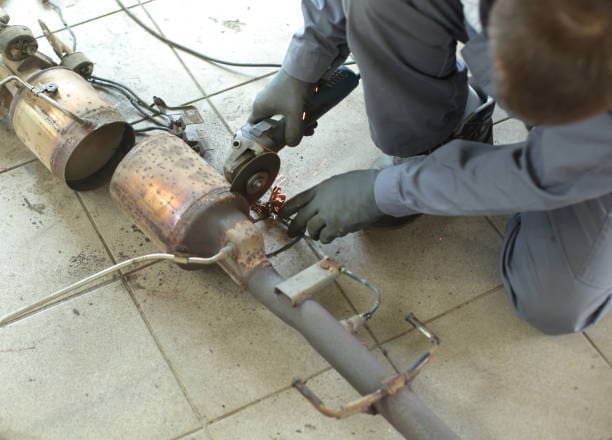Caring for Your DPF Filter has become integral to diesel vehicles, playing a crucial role in reducing harmful emissions. Proper care and maintenance of the DPF are essential not only for maintaining vehicle performance but also for ensuring compliance with emissions regulations. This article aims to provide a detailed guide on caring for your DPF filter, covering its function, maintenance practices, troubleshooting common issues, and ensuring longevity.
Understanding the DPF Filter
Table of Contents
ToggleWhat is a DPF?
A Diesel Particulate Filter (DPF) is a device designed to capture and store soot particles (particulate matter or PM) from diesel engine exhaust emissions. It consists of a ceramic or metallic substrate with microscopic channels that trap and retain soot.

How Does It Work?
During the engine’s operation, soot particles accumulate in the DPF. When the filter reaches a certain level of soot load, the engine’s electronic control unit (ECU) initiates a regeneration process to burn off the trapped soot, thereby cleaning the filter and reducing emissions.
Signs of DPF Problems
Dashboard Warning Lights
Modern vehicles are equipped with onboard diagnostics that monitor the DPF’s condition. A lit DPF warning light indicates potential issues such as excessive soot accumulation or regeneration failure.
Reduced Performance and Fuel Efficiency
A clogged DPF can lead to increased back pressure in the exhaust system, affecting engine performance and fuel efficiency. Drivers may notice reduced power output or increased fuel consumption.
Visible Smoke and Diesel Smell
Excessive soot buildup can result in visible smoke from the exhaust and a noticeable diesel odor. These symptoms often indicate that the DPF requires attention and cleaning.
Routine Maintenance for DPF Care
Regular Driving Habits
Frequent highway driving at sustained speeds helps maintain the DPF’s efficiency. Highway conditions allow the exhaust system to reach higher temperatures, which aids in the passive regeneration (self-cleaning) of the DPF.
Avoid Short Trips
Short journeys prevent the DPF from reaching the optimal operating temperatures required for regeneration. If your driving primarily involves short trips, consider taking longer routes occasionally to facilitate DPF regeneration.
Quality Diesel Fuel Usage
Using high-quality diesel fuel with low sulfur content reduces the formation of ash and deposits in the DPF. Cleaner fuel helps prolong the DPF’s lifespan and ensures efficient operation.
DPF Regeneration Process
Types of Regeneration DPF regeneration occurs in two primary forms:
- Passive Regeneration: Occurs naturally during normal driving conditions when exhaust temperatures are sufficiently high to burn off accumulated soot.
- Active Regeneration: Initiated by the vehicle’s ECU when passive regeneration is insufficient. This process involves injecting extra fuel into the exhaust system to elevate temperatures and facilitate soot combustion.
Recognizing Regeneration Events During active regeneration, drivers may notice increased fuel consumption, higher engine RPMs at idle, or a slight diesel smell. It’s essential to allow the regeneration process to complete uninterrupted to prevent potential DPF blockages.

DPF Cleaning and Maintenance
Professional Cleaning Services
Periodically, especially when warning lights indicate issues, consider professional DPF cleaning services. These services utilize specialized equipment to clean and regenerate the DPF effectively.
Manual Cleaning and Inspection
In some cases, manual inspection and cleaning of the DPF may be necessary. Follow manufacturer guidelines and use recommended cleaning agents and procedures to avoid damaging the filter.
Troubleshooting Common DPF Issues
Regeneration Failure Consistent failure to complete regeneration cycles may indicate underlying issues such as faulty sensors, excessive ash accumulation, or engine malfunctions. Consult a qualified mechanic to diagnose and rectify the problem promptly.
Ash Accumulation Over time, DPFs accumulate non-combustible ash from engine oil additives and other sources. Ash cannot be regenerated and requires periodic removal through specialized cleaning methods.
Long-Term DPF Care
Adherence to Vehicle Maintenance Schedule Follow the manufacturer’s recommended maintenance schedule for your vehicle. Regular servicing helps maintain optimal engine performance and reduces the likelihood of DPF-related issues.
Consultation with Experts If uncertain about DPF maintenance or encountering persistent issues, consult certified automotive technicians or specialists in diesel emissions systems. They can provide tailored advice and solutions to maximize DPF longevity and efficiency.
Conclusion
Caring for your DPF filter is crucial for maintaining your vehicle’s performance, efficiency, and compliance with emissions standards. By understanding its function, adopting proper maintenance practices, and promptly addressing any issues, you can ensure that your DPF operates effectively throughout its lifespan. Remember, proactive care and attention to driving habits are key to preventing DPF-related problems and enjoying trouble-free motoring with your diesel vehicle.



